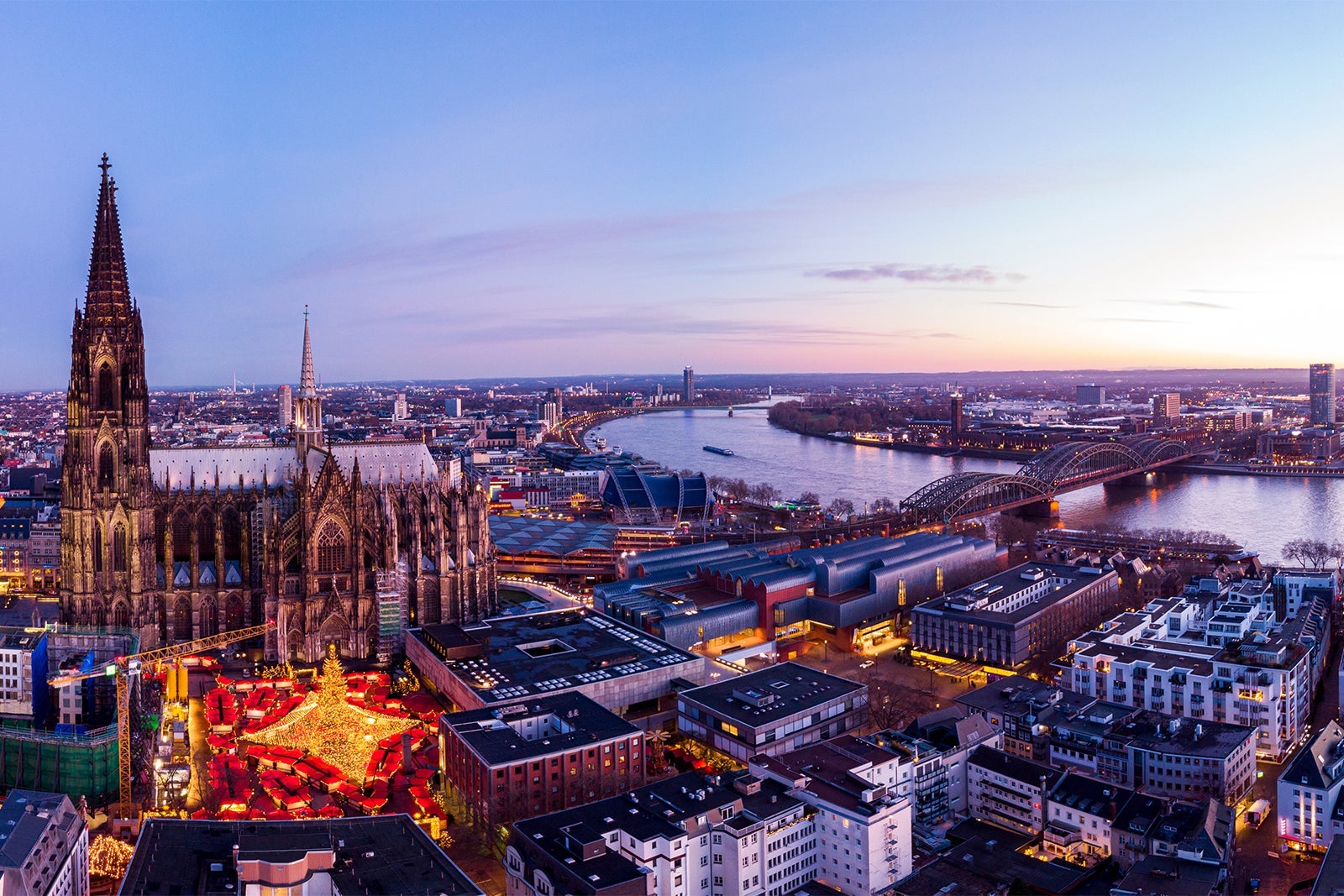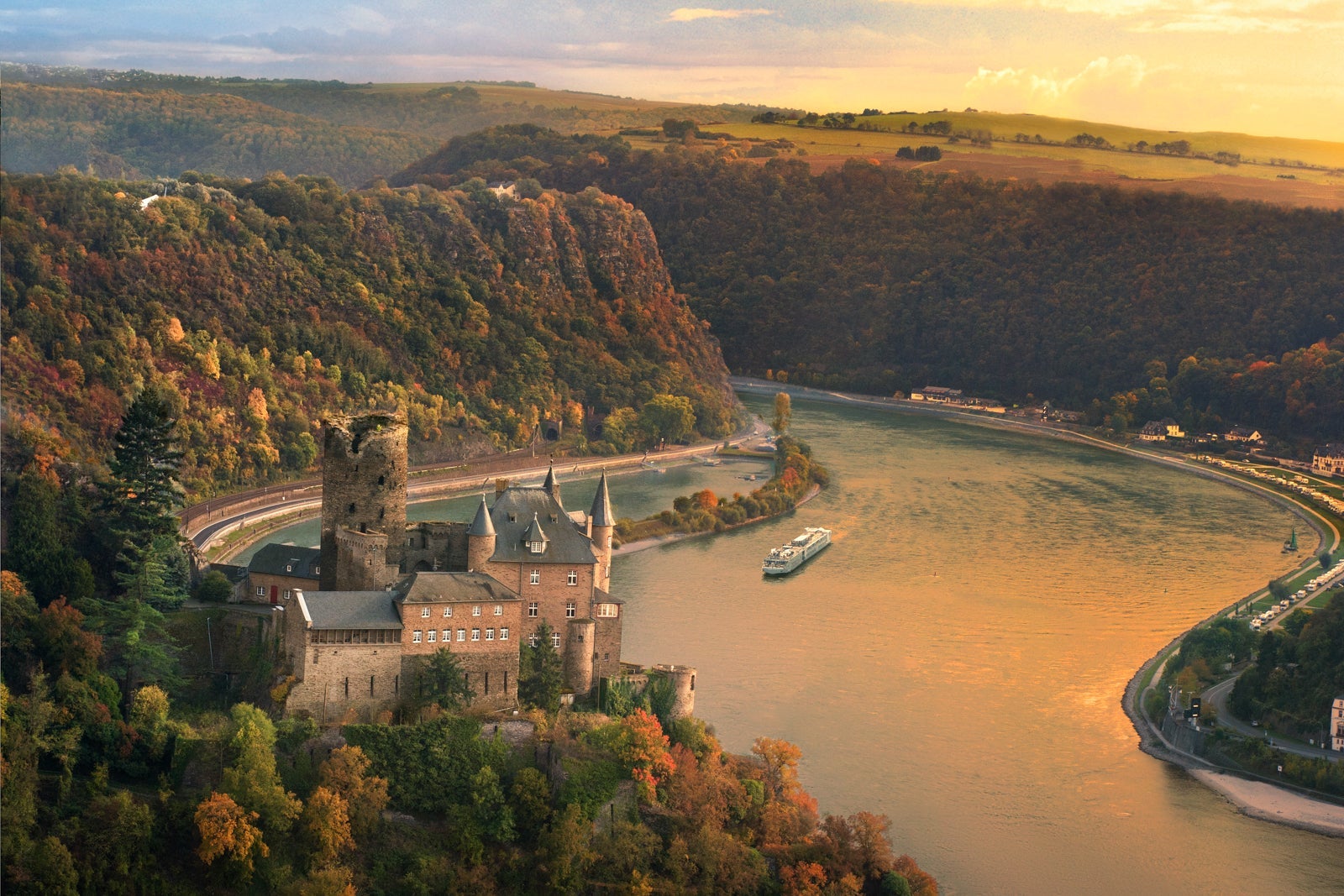I had never been a big fan of cruises or group travel in general. But from the moment I set sail on my first European river cruise, I was hooked.
Whether exploring France’s wine regions, historic capital cities along the Danube, the castle-lined Rhine or Portugal’s scenic Douro Valley, there is — in my opinion — no better, more relaxed way to explore Europe than with the only-unpack-once convenience and comfort from what is essentially a floating boutique hotel.
And if you want to learn more about Europe’s history and landmarks, daily excursions, complete with local guides, are included (along with meals and often alcoholic beverages) on lines catering to international travelers.
Prefer to explore on your own? Check out a bike or simply step off the ship in the heart of town to wander the streets. (One of my favorite river cruise experiences was getting lost in Vienna on a bicycle and spending nearly five hours pedaling through the city, admiring the imperial architecture, then stopping in a park for lunch as I gradually found my way back to the dock.)
Unlike many guided land tours, there are never mandatory schedules, other than being on board in time for the ship to slowly make its way down the continent’s picturesque waterways to your next stop. And on board, whether you’re having a local farm-to-table meal, a wine-pairing dinner, cocktails on the sundeck or simply relaxing in your cabin, there is always a view.
What rivers can you cruise in Europe?
Danube
Flowing nearly 3,000 kilometers (about 1,864 miles) through the heart of central Europe from the Black Forest to the Black Sea, the Danube is one of the most popular rivers for cruising and features one of the most iconic European river cruise experiences: sailing past Budapest, Hungary’s massive domed neo-Gothic Hungarian Parliament Building.
While most Danube cruises sail between Hungary and Germany, lines are increasingly also sailing south through the Balkans. Visit the architecturally rich capitals of Vienna, Budapest and Belgrade, Serbia, as well as villages seemingly lost in time. And take in natural wonders such as the river’s famed Iron Gates and the spectacular rock formations of Belogradchik, Bulgaria.
Rhine
Like the Danube, the Rhine is one of the most sailed rivers in Europe. These itineraries generally sail between Amsterdam and Basel, Switzerland, and feature an afternoon or morning of scenic sailings through the beautiful Rhine Gorge, where you’ll learn about the legends behind the myriad of medieval castles that line the hills of this UNESCO World Heritage Site.
Seine
One of the most popular routes in France is the round-trip itinerary from the glittering lights of Paris to Normandy, which hits centuries-old riverside villages and many of the must-sees of France.

Reward your inbox with the TPG Daily newsletter
Join over 700,000 readers for breaking news, in-depth guides and exclusive deals from TPG’s experts
Sail through the romantic Isle-de-France region into Les Andelys, home to Richard the Lionheart’s Chateau Gaillard. In the Normandy capital of Rouen, visit Rouen Cathedral and explore the city’s Museum of Fine Arts, which includes masterpieces by Claude Monet and Eugène Delacroix. These itineraries also offer excursions to the Somme battlefields of World War I and Normandy beaches where World War II’s D-Day landings took place in 1944.
Rhone
One of my favorite cruise itineraries, and a perfect trip for foodies and oenophiles, is through France’s Provence region on the Rhone River. The sailings offer a mix of traditional touring blended with top-notch wine tastings, locally sourced gourmet meals and culinary-focused excursion options.
Sailings generally start in France’s culinary capital of Lyon, where you can scour brioche bakeries and food markets. Sample some of France’s finest wines in Chateauneuf-du-Pape and Beaujolais, and visit a truffle farm in Grignan. Of course, no cruise along the Rhone is complete without stops in Arles, famed for its provencal light that lured Vincent van Gogh, and the cobblestone-lined streets of the fifth-century village of Viviers.
Douro
Most of the major river cruise lines now sail at least one ship along Portugal’s Douro River, considered one of the most scenic in Europe because it has a UNESCO designation that protects scenic landscapes from commercial development. Unlike most rivers, nighttime sailing is also prohibited, meaning there is more scenic daytime cruising past historic quintas (estates) and picturesque villages along Portugal’s golden river.
Visit the wine caves of Vila Nova de Gaia, bicycle through vinho verde wine country and sail deep into the mountain landscapes, idyllic riverside villages, baroque castles and medieval ruins of Portuguese wine country. Most of the cruises sail round-trip from Porto to the Spanish border, with excursions to the historic university town of Salamanca, or the “Golden City,” famous for its sand-colored buildings and churches.
Garonne
Wander the vineyards of Margaux, France; sample oysters on the country’s Atlantic coast; explore the outdoor markets of Libourne, France; and enjoy plenty of downtime to explore the beautiful southern France city of Bordeaux, known as the world capital of wine.
Most itineraries meander slowly along the Garonne, with options for hiking and biking through the region’s many vineyards. Wine tastings, of course, are plentiful, as are options for exploring the many quaint villages that make this area a favorite weekend getaway for locals.
Venetian Lagoon
While it’s not technically a river, two companies — Uniworld and CroisiEurope — also sail from Venice, Italy, to the country’s Po River. Since large cruise ships are no longer allowed in the lagoon, it’s one of the few ways to cruise around the heart of Venice and to the mouth of the Adriatic Sea while also hitting the islands and landmarks that make Venice a top international destination.
What companies sail in Europe?
- Amadeus River Cruises
- AmaWaterways
- A-Rosa Cruises
- Avalon Waterways
- Celebrity (beginning in 2027)
- CroisiEurope
- Emerald Cruises
- Lindblad-National Geographic (beginning in 2026)
- Riverside Luxury Cruises
- Riviera River Cruises
- Scenic Luxury Cruises & Tours
- Tauck
- Trafalgar (beginning in 2026)
- Uniworld Boutique River Cruises
- Viking
When is the best time to sail in Europe?

River cruise season traditionally runs from April to October, with some of the itineraries, particularly on the Rhine and the Danube, sailing through the holidays with special Christmas market cruises. But some lines are also extending their seasons to meet demand for more sailings during the offseason, when there are fewer crowds. Viking and AmaWaterways have even started sailing a few itineraries year-round, mostly on the Rhine and the Danube.
Still, there are more factors than just temperatures to consider when deciding when to sail, as water levels can vary dramatically throughout the year. During hot, dry summers, for instance, stretches of the Rhine and the Danube can run so low that river ships can’t pass.
While some lines bring in buses to finish the itineraries, most have now perfected the art of ship swaps, where they transfer passengers to sister ships going the opposite direction while the passengers are enjoying excursions. Too much water can also impact sailings. If the water is too high, ships can’t always pass under bridges. And fast-flowing water in the spring can slow down ships sailing against the flow, which can impact the itinerary.
Why do all the European river ships look the same?
Most European river ships are about the same size: long, with just three levels above the water so they can fit under the bridges and through the many narrow locks that connect Europe’s rivers. The only exceptions are a few of the largest ships that can sail the lock-free lower Danube, including AmaWaterways’ AmaMagna and Riverside Luxury Cruises’ Mozart.
What does the typical itinerary look like?
Sailings are generally seven to 14 days. Most days are spent in port, although there are occasional day sailings through scenic areas, such as through the dramatic Iron Gates on the lower Danube and for castle-viewing along the Rhine.
In recent years, Uniworld Boutique River Cruises and AmaWaterways have offered sailings of more than a month across multiple ships and rivers. Avalon Waterways, meanwhile, offers shorter three- to-five-day sailings that are ideal for guests looking to combine a river cruise with land itineraries.
How do you pick the right line for your travel style and budget?

Viking, the world’s largest river cruise operator, has some 80 ships in Europe, offering a variety of itineraries across the continent. It has solid upscale and casual luxury options, with a variety of stateroom choices.
For those seeking the ultimate in luxury, Scenic offers a variety of top-notch amenities, including butler service for all its guests. Uniworld provides butler service for guests in its top suites. AmaWaterways and Avalon Waterways offer a more casual luxury atmosphere, sans butlers, but with comparable service and cuisine. As for Emerald, it has a more laid-back yet still upscale experience at a slightly lower price point, but with fewer inclusions.
Related: Are European river cruises right for families? Here are the pros, cons and best options for kids
What does a European river cruise cost?
Prices generally range from $3,000 to $8,000 per person for a seven-night sailing, depending on the line and the cabin type. Like ocean liners, cabin options range from small, bottom-deck accommodations without balconies to spacious suites.
Bottom line
River cruises are one of the most relaxing ways to explore Europe. And with so many cruise lines offering different itineraries, there are options to suit just about every type of traveler and budget.